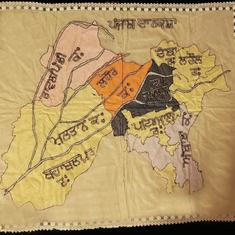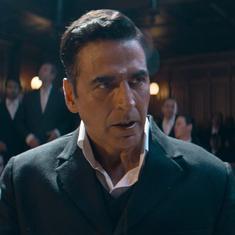Impressive as these accomplishments were, what made him stand out and endeared him to audiences, was his transparent joy, at times even elation, at creating music, which was undiminished with age. Now the world will no longer be able to partake of his gifts. Hospitalised in Chennai about ten days ago in order to undergo a liver transplant, Srinivas died at 9.30 am on September 19 after a sudden complication, his uncle said.
Srinivas, who turned 45 in February, was in some ways already a veteran, having begun his career as a pre-teen. He was not only a top Carnatic musician, performing at the most reputable venues in Chennai, the hub for this classical form, but had also made a mark in world music, playing with top international musicians. Among his more popular fusion collaborations was his stint with Remember Shakti, which featured the guitar legend John McLaughlin and table maestro Zakir Hussain, among others.
Enormous loss
Fellow musicians and fans were unable to digest the enormity of the loss.
"It is one of the most unbelievable tragedies," said N Ravi Kiran, 47, the great chitravina player, who was himself a child prodigy and was a close friend of Srinivas, speaking from Chicago. "He was one of the few people whom I really respected as a truly gifted musician of a high order. He was one of the most impressive ambassadors of music that India has ever seen. I am devastated."
Ravi Kiran added, "What he did was unprecedented. He took an instrument like the [electric] mandolin and made it a household name not only in Indian music but also world music. What has he not done? He has played in top venues in India and around the world, including the Olympic Games in Barcelona, and he has performed with top musicians."
Srinivas and Ravi Kiran were scheduled to play a series of fundraising concerts together next month in the US to raise money for a musicians' welfare trust. "He had even sent me email two days before being hospitalised, discussing a composition of mine that we were thinking of presenting at one of these concerts," Ravi Kiran said. "I cannot believe that he is no more."
Commitment to classicism
Sriram Parasuram, 48, a Chennai-based violinist and vocalist of both Carnatic and Hindustani music, accompanied Srinivas numerous times and was also a good friend. "He did new-age music," Parasuram said. "But his commitment to classicism was impeccable. The essence of his greatness was his commitment to excellence. He was also a gem of a person."
"Destiny pushed him to great heights at a very early age," continued Parasuram. "But he was never consumed by the status that he enjoyed, and fact that he had millions of fans. He was very rooted. His early success and celebrity-hood did not change his basic nature."
Parasuram praised his friend for being able to render compositions today that he had been playing for decades with a freshness and energy as though he were doing so for the first time. He singled out Srinvas's renditions of the Pancharatna Kritis, five distinctive works of the great 18th century composer Thyagaraja, as being particularly special. Srinivas would often begin his concerts with one of them, breaking with tradition.
Parasuram remembers being floored three months ago while listening to a television broadcast of Srinivas playing one of them, Endaro Mahanubhavulu in Raga Shree, at a festival in Orissa. "I could tell he was having a great time," Parasuram said. "He was playing for himself, but his joy was infectious. Continuing to be sincere and playing with that kind of dedication are what I celebrate in Srinivas."
Here is a link to Srinivas playing this kriti.
And a link of him playing another Pancharatna Kriti, Jagadananda, in Raga Natai.
Some discerning listeners felt that after he had established himself as a serious Carnatic musician, he sometimes needlessly jazzed up his playing and got carried away with the rhythmic aspect, which some instrumentalists in particular are prone to doing. But overall, even die-hard purists concede that he was a serious artiste, playing the most involved compositions with all the seriousness and delicacy that they deserved.
A phenomenon
A child prodigy, Srinivas stormed the world of Carnatic music at the age of 12, impressing the cognoscenti not only with his preternatural musical ability but by playing the south Indian classical music form on the electric mandolin for the first time.
Although referred to as "Mandolin" Srinivas, the instrument he played was far closer in playing technique and sound to the electric guitar than the high-fretted acoustic mandolin used in Western folk music. Srinivas used five strings, one less than the electric guitar.
Srinivas tuned the five strings to suit Indian music, tuning them to the notes Sa-Pa-Sa-Pa-Sa, with the Sa corresponding to his base shruti, or tonic, and the strings increasing in pitch. He usually played in C or C#, so if he chose the former as his tonic, his five strings would be tuned to C-G-C-G-C.
Unlike some non-traditional instruments, the electric mandolin is suited to bringing out all the subtle oscillations of Carnatic music, called gamakas, which Srinivas did, as exemplified by his renditions of gamaka-laden ragas such as Thodi and Devagandhari.
Ravi Kiran, who at that time of Srinivas's debut was 14 years old and was already an established musician, recalled that he was often asked by concert organisers to judge whether a young child was truly a prodigy, like he had been. Ravi Kiran was usually disappointed by what he heard.
So when someone asked him to hear yet another kid, one called U Srinivas, Ravi Kiran went in expecting to be let down again. "But he was absolutely superb. He was brilliant," he recalled of the event that was the start of their three-decade friendship.
Surprisingly, the two child prodigies and friends appeared on stage together only last year, at a jugalbandi festival Chennai. A fine review of the performance appears here.










